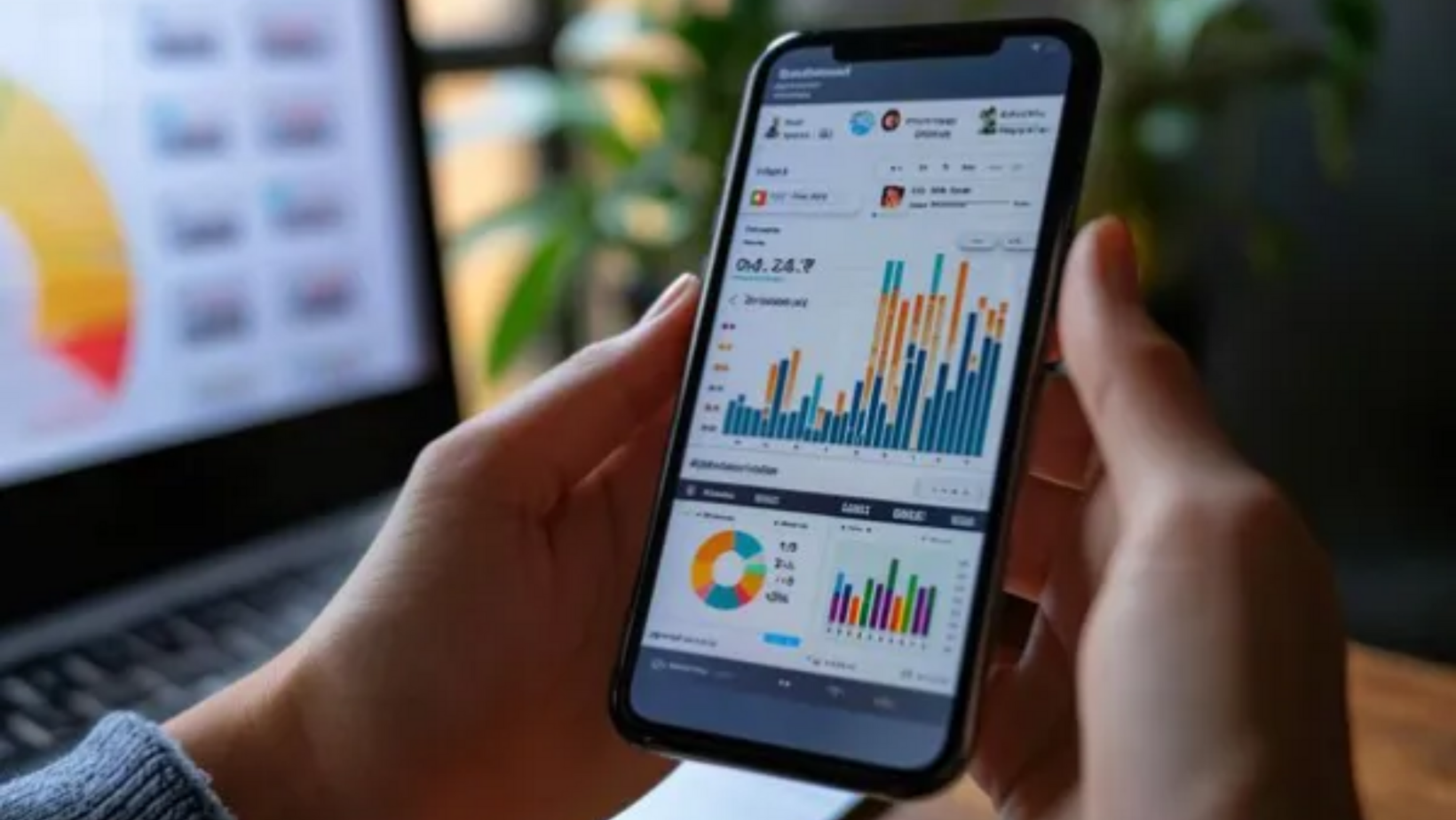10 Digital Transformation Trends That Define Business Success in 2025

The pace of technological change has reached a critical inflection point. What once took decades to transform now happens in months. For business leaders navigating this landscape, the question isn’t whether to embrace digital transformation—it’s how quickly they can adapt to stay competitive.
At Blue Orange Digital, we’ve helped hundreds of organizations implement practical AI automation and data analytics solutions that deliver measurable results. The trends shaping 2025 aren’t just theoretical concepts; they’re actionable strategies that forward-thinking companies are implementing today.
The Digital Transformation Market: Understanding the Stakes
The numbers tell a compelling story. The global digital transformation market, valued at $880.28 billion in 2023, is projected to grow at a staggering 27.6% CAGR through 2030. This explosive growth isn’t driven by hype—it’s fueled by tangible business outcomes: reduced operational costs, improved customer experiences, and new revenue streams.
Organizations that delay their digital initiatives face more than just missed opportunities. They risk becoming irrelevant in markets where agility and data-driven decision-making separate leaders from laggards.
Trend 1: AI Automation Moves from Experiment to Essential
Artificial intelligence has crossed the chasm from pilot projects to production systems. Today’s AI agents don’t just answer customer queries—they orchestrate entire business processes, from inventory management to financial forecasting.
Consider how McKinsey reports that companies implementing AI at scale see 20% increases in EBITDA. These aren’t futuristic promises; they’re current realities for organizations leveraging platforms like Databricks and Snowflake to operationalize their AI initiatives.
Machine Learning: From Insights to Predictions
Machine learning algorithms now process vast datasets to uncover patterns humans would never detect. Retail companies predict inventory needs weeks in advance. Healthcare providers identify at-risk patients before symptoms appear. Financial institutions detect fraud in milliseconds.
The key differentiator? Organizations that build robust data pipelines and governance frameworks see 3x better ROI from their ML investments compared to those taking ad-hoc approaches.
Trend 2: 5G Networks Enable Real-Time Everything
The 5G rollout transforms more than just download speeds. It fundamentally changes what’s possible with connected devices and real-time analytics.
IoT at Scale Becomes Reality
Manufacturing floors now deploy thousands of sensors streaming data continuously. With 5G’s ultra-low latency, these systems detect quality issues instantly, preventing defects before they cascade through production lines.
Smart cities leverage 5G to optimize traffic flows in real-time, reducing congestion by up to 30% in pilot programs across major metropolitan areas.
Trend 3: Cloud Architecture Evolves Beyond Simple Migration
The cloud conversation has matured from “should we migrate?” to “how do we optimize?” Modern organizations embrace sophisticated multi-cloud strategies that balance performance, cost, and compliance requirements.
Serverless Computing Changes the Economics
Serverless architectures eliminate infrastructure management overhead while providing infinite scalability. AWS reports that organizations adopting serverless reduce deployment times by 70% while cutting infrastructure costs by 40%.
For data-intensive applications, combining serverless functions with platforms like Snowflake creates powerful, cost-effective analytics pipelines that scale automatically with demand.
Trend 4: IoT Ecosystems Generate Unprecedented Data Volumes
By 2025, experts predict over 75 billion IoT devices will be online. Each generates continuous data streams that, when properly harnessed, provide unprecedented visibility into operations, customer behavior, and market dynamics.
Security Becomes Paramount
With every connected device representing a potential vulnerability, IoT security moves from afterthought to architecture cornerstone. Organizations implementing comprehensive IoT security frameworks from day one avoid the costly retrofitting that plagued early adopters.
Trend 5: Zero Trust Security Becomes Standard Practice
The traditional security perimeter no longer exists. Remote work, cloud services, and partner integrations create a complex ecosystem where “trust but verify” fails to protect critical assets.
AI-Powered Threat Detection
Modern security platforms use machine learning to identify anomalies across millions of events per second. These systems detect sophisticated attacks that rule-based approaches miss, reducing breach detection time from months to minutes.
Organizations implementing AI-driven security see 50% reductions in security incidents and 60% faster threat response times, according to IBM’s Cost of a Data Breach Report.
Trend 6: Extended Reality Transforms Training and Customer Experience
Virtual and augmented reality technologies move beyond gaming into practical business applications. Medical students perform complex procedures in risk-free virtual environments. Retail customers visualize furniture in their homes before purchasing.
Measurable Training Improvements
Companies using VR for employee training report 40% faster skill acquisition and 75% better retention rates compared to traditional methods. These aren’t marginal gains—they’re transformative improvements that directly impact operational excellence.
Trend 7: Data Privacy Drives Competitive Advantage
Privacy regulations like GDPR and CCPA represent more than compliance checkboxes. They’re opportunities to build trust and differentiate through ethical data practices.
Transparency as a Business Strategy
Organizations that clearly communicate data usage policies and provide user control see 23% higher customer satisfaction scores. In markets where trust drives purchasing decisions, privacy becomes a powerful differentiator.
Trend 8: Low-Code Platforms Democratize Innovation
Business users no longer wait months for IT to build simple applications. Low-code platforms enable rapid prototyping and deployment, turning ideas into solutions in days rather than quarters.
Citizen Developers Drive Agility
Organizations empowering business users with low-code tools see 3x faster time-to-market for new initiatives. Marketing teams build campaign dashboards. Operations managers create workflow automation. Finance departments develop reporting tools—all without writing traditional code.
Trend 9: Blockchain Solves Real Business Problems
Beyond cryptocurrency speculation, blockchain technology addresses fundamental business challenges around trust, transparency, and verification.
Supply Chain Transparency
Food companies use blockchain to track products from farm to table, reducing recall response times by 90%. Pharmaceutical firms ensure drug authenticity, combating the $200 billion counterfeit medicine market.
Smart contracts automate complex multi-party agreements, reducing transaction costs by up to 80% in industries like real estate and logistics.
Trend 10: Sustainable Technology Becomes Business Imperative
Environmental responsibility transitions from corporate social responsibility to core business strategy. Investors increasingly factor ESG metrics into valuations, making sustainability a financial necessity.
Green IT Reduces Costs While Improving Image
Data centers implementing advanced cooling technologies and renewable energy sources reduce operational costs by 30% while meeting sustainability targets. Cloud providers offering carbon-neutral services win contracts from environmentally conscious enterprises.
Turning Trends into Transformation
These ten trends represent more than technological evolution—they’re reshaping how businesses create value, serve customers, and compete in global markets. The organizations that thrive won’t be those with the biggest budgets or most advanced technology. They’ll be those that thoughtfully implement practical solutions addressing real business challenges.
At Blue Orange Digital, we’ve learned that successful digital transformation isn’t about chasing every trend. It’s about identifying which technologies align with your business objectives and implementing them through proven methodologies that deliver measurable results.
The question for 2025 isn’t whether these trends will impact your business—they will. The question is whether you’ll harness them to create competitive advantage or watch competitors pull ahead while you deliberate.
The tools exist. The strategies are proven. The only variable is execution. Organizations that act decisively, guided by expertise and grounded in practical implementation, will define the next era of business success.


